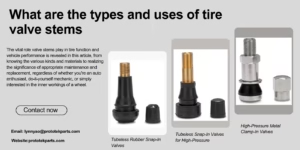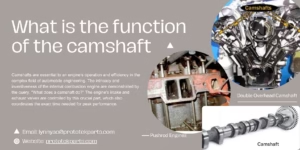Blog Details

The Application of Aluminum Forging Parts
In today’s industrial manufacturing realm, aluminum forgings parts have garnered significant attention due to their unique properties and wide array of applications. Crafted through precise techniques and technologies, they bring forth numerous astounding advantages.
The Mastery of Manufacturing Processes
Plastic Deformation under High Temperature and Pressure
The plastic deformation during the manufacturing process of aluminum forgings parts stands as a pivotal element of its intricate craftsmanship. By subjecting aluminum alloys to high temperatures and pressures, the material gains excellent plasticity, allowing it to be precisely forged into desired shapes. For instance, in crafting engine crankshafts, aluminum alloys, when subjected to forging processes at high temperatures, yield products that are more uniform and possess higher strength.
Precise Control in Process Steps
Every step in the manufacturing of aluminum forgings parts demands precise control to ensure the quality and performance of the final product. The preheating stage requires precise temperature and time control to ensure that the aluminum alloy reaches its optimum plastic state. During forging, controlling pressure and speed is critical to prevent material defects during deformation. Control during the cooling stage affects the final product’s grain structure and strength.
Application of Automation Technologies
Modern aluminum forging manufacturing extensively employs automation technologies such as CNC machine tools and robots. These technologies enable precise control over each manufacturing step, enhancing production efficiency and product consistency. For example, utilizing CNC machine tools ensures precise control over the machining process of aluminum forgings, ensuring that product dimensions and surface quality meet requirements.
Manufacturing Unconventional Shapes
Aluminum forging technology also enables the production of unconventional shapes of aluminum alloy products. Through precise mold design and control, complex-shaped aluminum forgings like blades and turbine blades in aerospace engine components, which demand high precision in manufacturing processes, can be produced.
Diversity in Application Fields
Aluminum forgings parts showcase their versatility and wide-ranging applications across various industries. In the automotive industry, they find extensive use in engine components, vehicle body structures, among other aspects, owing to their lightweight and high-strength characteristics. Simultaneously, in the aerospace industry, aluminum forgings play a vital role in manufacturing critical components like aircraft structures and aviation engines.
Manifestation of Characteristics and Advantages
Lightweight Characteristics
Aluminum forgings are widely used in automotive manufacturing, such as in vehicle body structures, engine components, and suspension systems. For instance, some modern automobiles utilize engine components made of aluminum forgings, like crankshafts and connecting rods, reducing the overall vehicle weight and enhancing fuel efficiency.
Strength and Corrosion Resistance
In the aerospace industry, aluminum forgings are employed in manufacturing aircraft wings and components of aviation engines. For example, the aluminum forgings used in aircraft wing structures can withstand enormous aerodynamic pressures during high-speed flight, possessing excellent corrosion resistance to ensure long-term flight safety.
Sustainability and Environmental Friendliness
Aluminum forgings not only find application in the automotive and aerospace fields but also play a significant role in the construction and electronics industries. For instance, some architectural structures utilize aluminum forgings in their manufacturing processes, contributing to sustainable practices and facilitating material recycling, thus reducing material waste and promoting sustainable development.
Future Outlook and Development Trends
New Technologies and Material Applications
With the advancement of 3D printing technology, the aluminum forging industry is exploring its utilization. Through 3D printing, complex-shaped aluminum forgings can be manufactured more precisely, offering more efficient and customized solutions across various industries.
Innovation and Development Directions
The research and improvement of aluminum alloys stand as a key direction for future development. Scientists and engineers are striving to develop new types of aluminum alloys to enhance their strength, wear resistance, and high-temperature performance, meeting the ever-changing and increasingly stringent industrial demands.
The continuous innovation in aluminum alloys and forging techniques promises a broader development landscape for the aluminum forging industry in the future.
Prototek has been offering professional custom aluminum forging parts machining parts for over 13 years. If you have any needs about metal manufacturing services, contact us via email: Lynnyao@prototekparts.com oder Telefon: +86-0792-86372550
Tags:
- Aluminum forging
























































